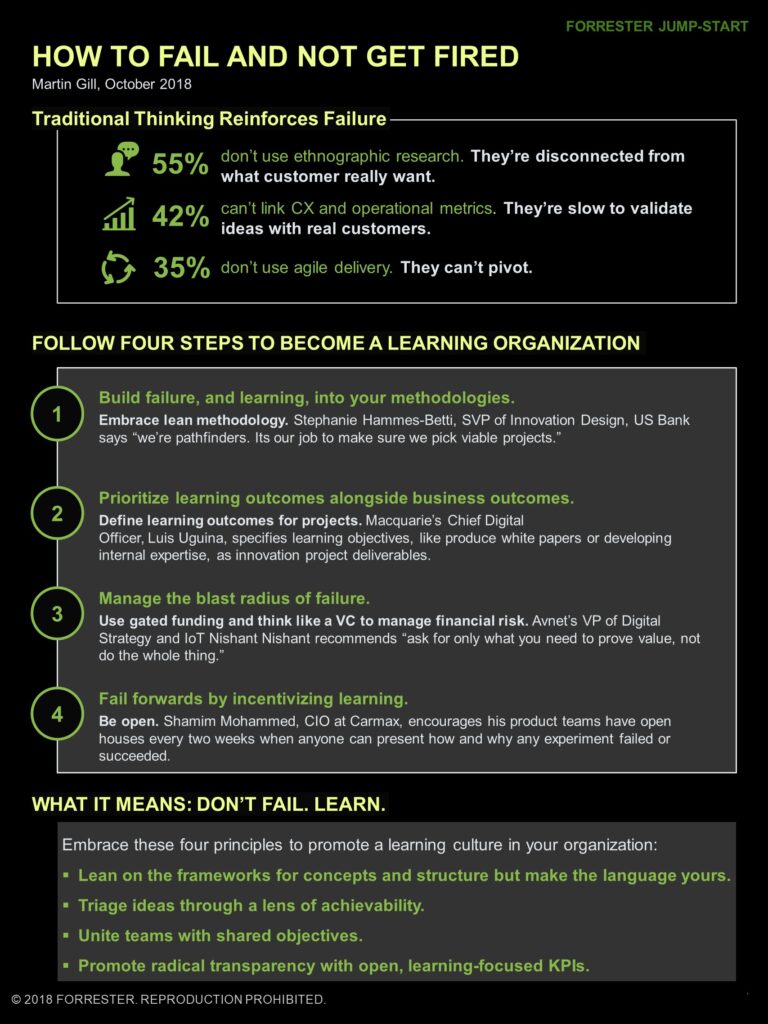How To Fail And Not Get Fired
For years now we’ve been promoting the concept of “fail fast” as if failure is awesome, something to aspire to. In many ways, it is. Thomas J. Watson Sr., the chairman of IBM in its industrial heyday, advised “If you want to succeed, double your failure rate.” I can find you a dozen similar quotes, from Thomas Edison to Lean guru Steve Blank. Adrienne Gormley, VP of global customer experience at Dropbox, said “We throw out the fear of failure” during Dropbox’s annual Hack Week, creating a safe space for anyone to be a creative thinker. Not every business leader is so enlightened.
You get it. But does your boss?
There’s lots of research on how NOT to fail — sound advice such as be customer-led, use ethnographic research, embrace design thinking, and use iterative delivery. But inevitably, if you’re truly challenging the boundaries of what’s possible for your customers, something’s going to tank. When it does, how do you make sure your job isn’t on the line?
We interviewed 11 digital and innovation leaders to get a handle on how they manage failure. We learned that they:
- Lean on Lean. The Lean startup is the go-to approach for innovators. Our interviewees combine Lean with design thinking, Agile delivery, and open, transparent communications to minimize the blast radius of failure.
- Treat the “pivot” as their new best friend. The Lean startup’s “pivot” concept is more than just rebranding failure. Focusing on tight, time-bound, build-test-learn feedback-driven cycles and constantly reviewing whether to stop, continue, or pivot help our leaders transform today’s failure into the cornerstone of tomorrow’s success.
- Don’t fail; learn. Failure is only failure if you fail to learn. Savvy leaders set learning objectives, perform retrospectives, and focus on making your organization systematically smarter with every failure.
Make Ownership And Transparency Your Leadership Mantras
In his book Extreme Ownership: How U.S. Navy SEALs Lead and Win, Navy SEAL officer turned management coach Jocko Willink writes, “How do you deal with failures? One word . . . Good.” Good, you learned. Good, you have another opportunity to solve the problem. He echoes the SEAL mantra of failing your way to success. Own, analyze, and communicate failure; don’t fear it. Instead, Willink says “I want you to be horrified; I want you to be terrified of sitting on your ass and doing nothing.” I’ve referenced Willink’s hard-won wisdom before in my research on autonomous teams. He reinforces what our recent interviewees told us about handling failure: Set expectations, communicate with clarity, and perhaps most importantly, establish clear learning outcomes to focus not on the failure itself but on learning.
You can read the report here, but for the time-pressed, here’s a jump-start summary.

